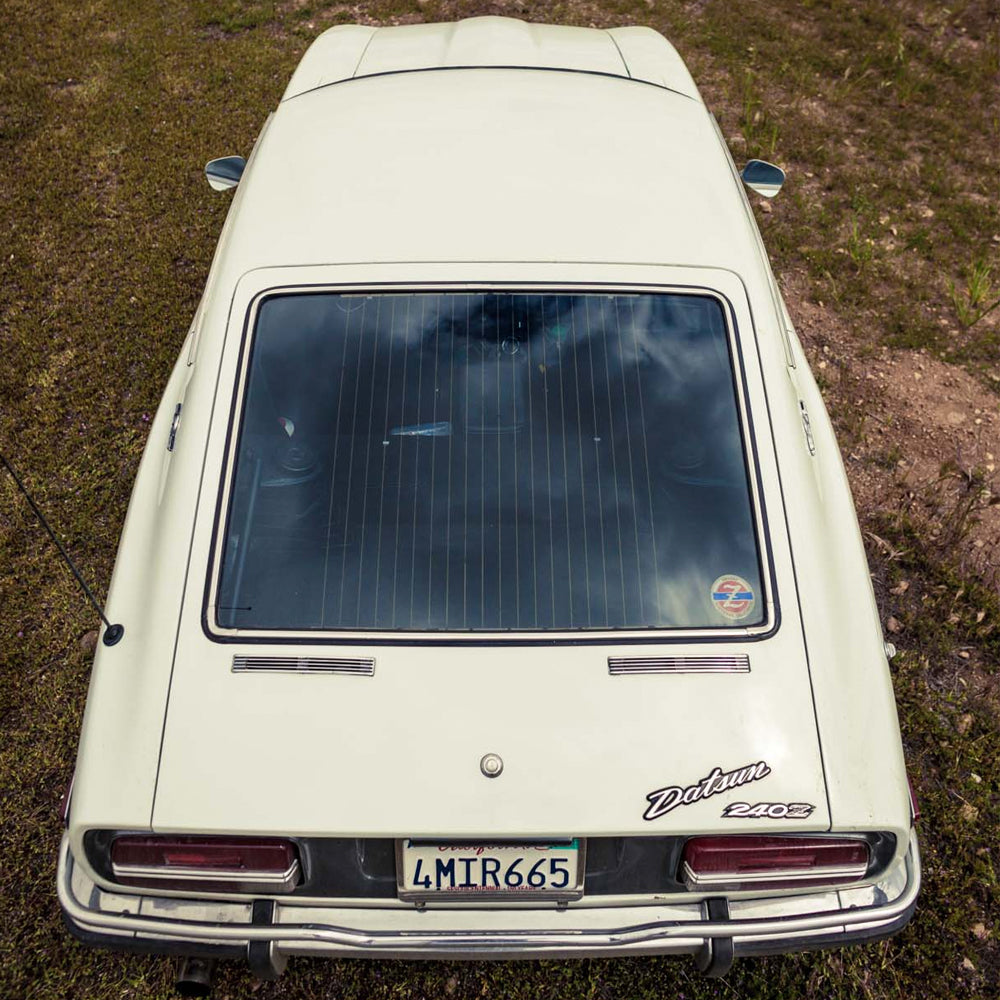Photography by Afshin Behnia for Petrolicious
The Collector is a weekly series produced in association with Gear Patrol.
Everyone knows the Datsun 240Z. However, for many, according to Mr. Brian Rabold, Hagerty’s Valuation Services Senior Manager, the Z “redefined what an affordable sports car could be, and in some ways helped seal the fate of British sports cars in the US.” While there is some debate as to whether it was penned by American Albrecht von Goertz or was handled completely in-house, the shape is iconic.


In some ways it’s like the Japanese Porsche 911, except that they were far more affordable when new and enjoyed legendary Japanese reliability. Brian adds, “It is also one of the best looking cars to ever come out of Japan. If it helps, think of it as Everyman’s Toyota 2000GT.” We couldn’t agree more and unlike the 911, the fact that the Z’s shape has changed over the years only makes the original more desirable. When the original was introduced, all models had standard four-wheel independent suspension and front disc, rear drum brakes. Power came from its 2.4L straight-six and used single barrel, variable-venturi side-draft Hitachi carburetors, built under license from SU carbs. And while we’d recommend shifting for yourself, Datsun did produce a small number of automatic-transmission-equipped 240s. Nothing exists in a vacuum though, and the reason that the 240Z enjoyed the success it did was a function of its price and the fun it offered. For Datsun, the car made sense because it gave them a halo car and effectively made the brand relevant to people interested in more than pure economy.
Besides their reliability, the cars are tough too, having won the 21st East African Safari Rally in 1973, in driver Shekhar Mehta’s hands. They also competed in motorsport in all over the world and are perhaps best known due to the BRE Datsuns of the early ‘70s. Brock Racing Enterprises, started and run by the legendary Mr. Peter Brock, campaigned the 240Z in US club racing and wound up dominating, trouncing competition that included BMWs, Toyotas, and Triumphs.
“And while nice 240Zs could be found everywhere in America for less than $10,000 for years, astute buyers have long since recognized the pure value they represented at that price and it is now difficult to find a high-quality example for four figures,” continues Brian, “Zero-mile cars now command upwards of $30K. Prices for the 240Z during the past 5 years have actually ticked down by approximately 5%, but these are likely good purchases for the long-term as cars from the 1970s are gaining interest in the hobby due to shifting demographics. Examples from 1970 are the best bet for appreciation due to their first-year status, followed by 1971 and 1972 models.” As if this weren’t enough, Sports Car International named the Datsun 240Z the number two sports car of the 1970s.
Special thanks to Mr. Brian Rabold and Hagerty for their contribution.


THIS ENGINE IS NO LADY
Unfortunately named the Fairlady Z in Japan, the 1971 240Z was barely 2,300 pounds, with 151 horsepower and 146 lb-ft from its inline-six engine making it a great performer in its time; it boasted more horsepower than a Porsche 911 of the same year. Coupled with a 4-speed manual transmission and Hitachi carburetors in the earlier models, the smooth six delivered great performance for a fraction of the price of BMW and Porsche. In one fell swoop, Nissan departed from their universal perception of boring economy cars while still utilizing the mindset of giving more for less.
Written by Amos Kwon of Gear Patrol
Click here to learn more about Gear Patrol's kit inspired by the 240Z.
























































